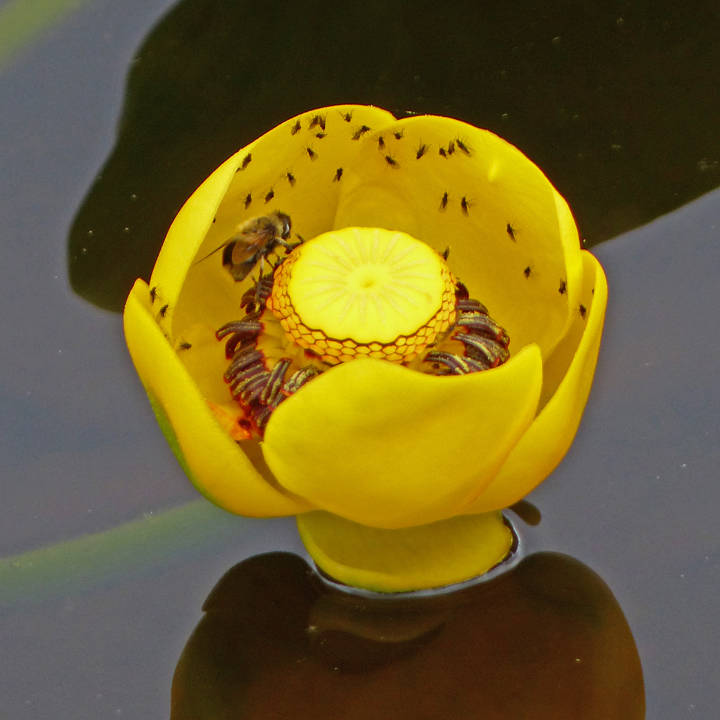A cool, damp day in mid-July, not very summery, but I strolled around the lower loop at Eaglecrest with a friend, just to see what we could see.
The showy white-bracted inflorescences of dwarf dogwood (bunchberry) were just past their prime but still pretty. A small black moth with white wing-bars visited the flowers of Tofieldia (so much easier to say than “sticky false asphodel”, its cumbersome common name).
Cloudberries and blueberries were developing. The tall ‘candles’ of the white bog-orchid sent their delicate fragrance into the air, and thousands of tiny pink flowers of bog cranberry dotted the mosses.
Some of the dandelion stems had reached extraordinary lengths; several were over 2 feet tall, including one that was close to 3 feet tall. After flowering, the stems elongate as the seeds mature, increasing the likelihood of rising above the surrounding herbaceous vegetation to let the wind-borne seeds disperse on their little parachutes.
A few shooting stars still bloomed, but most of them had seed capsules maturing. Like the dandelions, this species seems to elongate its stems as the seeds mature, so a breeze can reach them and shake the seeds from the fully mature, split capsule.
[Observations from a meadow in May]
The ponds were decorated with the leaves and flowers of yellow pond lily.
The yellow cup of the flower is formed by sepals; the actual petals are smaller and inside the sepalous cup. The ovary is shaped like a bottle, with a bulbous base, a neck, and a flat disc on top. The disc is the stigma, which receives pollen that can fertilize the ovules in the base of the ovary. Around the base of the ovary are the numerous anthers, containing pollen.
Although pond lily flowers are self-compatible, they seldom receive pollen from themselves, because stigma and anthers do not mature simultaneously. The stigma matures early, just as the flower begins to open, and visiting insects can enter the barely-open flower, perhaps depositing cross-pollen from another plant. Pollen from that flower may be distributed to other flowers later. The flower is said to smell like stale brandy — alluring to certain insects.
Ultraviolet patterns may add to the attraction: the stigmatic disc and sepals absorb UV and look dark, while the stamens (or maybe just the anthers) reflect UV, making a bright circle around the stigma. Nectar is produced on the petals near the base of the cup; that’s a nice reward for visitors.
Who are these visiting insects? In some places, mostly flies, but other populations may be pollinated by beetles or by bees and hoverflies. All that regional variation indicates that a closer look is needed for our pond lily populations.
The flowers we saw had been open for a while and were probably past the female-receptive phase. They had dozens of small flies covering the anthers, but we don’t know if those flies eventually would visit another lily flower. On the inner surface of the sepals were lots of very tiny insects we couldn’t begin to identify, but they were not likely to be pollinators.
Except for Steller’s jays hopping over the muskegs and squawking from the pines, bird life was quiet. Juncos chipped continually, as if they had young ones nearby. A hermit thrush sang, but rather rustily. And calls from high in the canopy sounded like young sapsuckers, maybe.
A highlight was spotting a small adult toad, probably at least a year old, as it sought cover under some leaves. Do toads breed at the elevation of the lower loop or did this one hop up from some distant pond down below?
• Mary F. Willson is a retired professor of ecology. “On The Trails” is a weekly column that appears every Wednesday.

